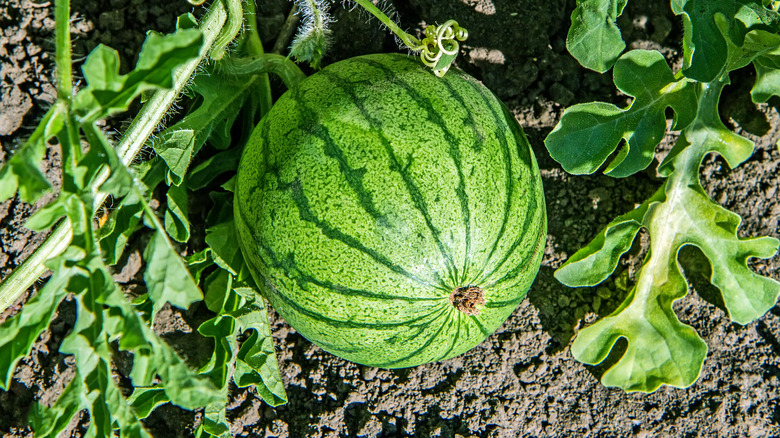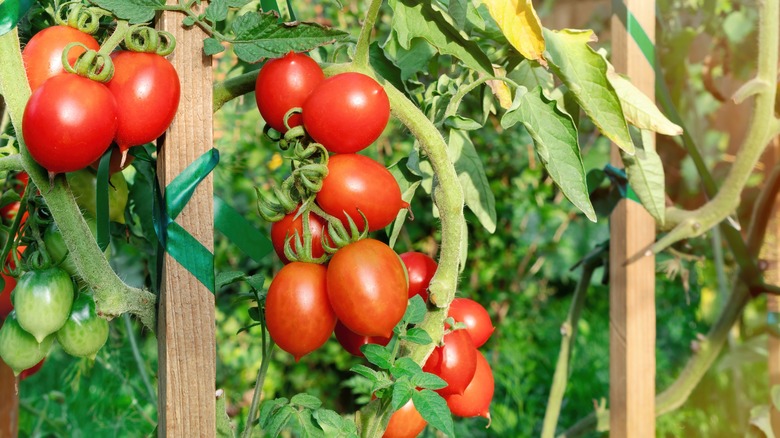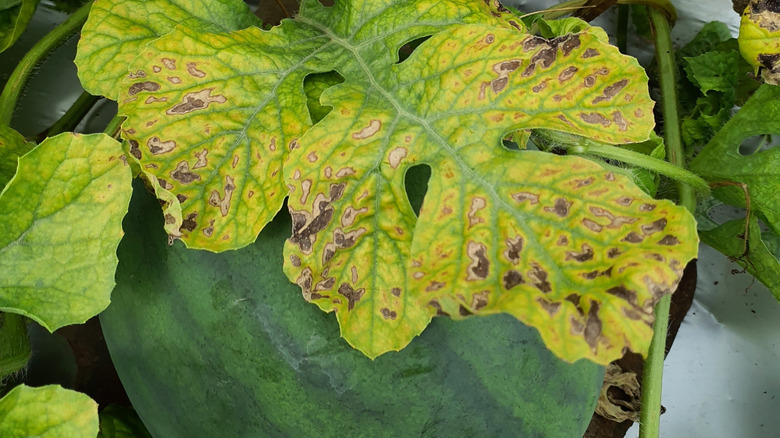Why You Shouldn't Plant Tomatoes Next To Watermelons
Tomatoes and watermelons have a lot in common. Other than just tasting delicious, they're both round summer fruits that thrive in similar growing conditions; they both like full sun, slightly acidic soil, and an amount of watering that keeps them consistently moist. This should be a companion plant match made in heaven, right?
As it turns out, not so much. It may sound like tomatoes would be one of the companion plants that will thrive alongside watermelons in the garden, but actually, it's best to avoid planting them together. The biggest issue is the way they rival each other for resources. Their similar fertilization needs cause them to compete for soil nutrients, and the ways that they grow cause them to fight for both space and sunlight, two important factors in any plant's growth. On top of that, they attract similar pests that affect each other, and they can be affected by the same diseases.
Tomatoes and watermelons compete for sunlight and nutrients
One of the ways tomatoes and watermelons elbow each other out for resources has to do with how the plants grow — tomatoes vine upward using stakes or cages for stability, while watermelons vine outward, sprawling as far as 20 feet. As the plants jockey for space, the height of the tomatoes can cast shade on the watermelons, preventing them from getting their required six hours minimum of daily sunlight.
Then, there's the matter of nutrients. Watermelons and tomatoes are both heavy feeders, which makes them all the more competitive. Nitrogen is crucial to the early growing stages of both plants, but an imbalance in either direction can be harmful — one plant getting too little nitrogen can stunt growth, while another getting too much nitrogen can lead to growing more leaves than fruit. Trying to correct this with ammonium nitrate fertilizer makes the problem even worse by inhibiting calcium uptake, which makes both tomatoes and watermelon more susceptible to blossom end rot.
Tomatoes and watermelons attract similar pests and diseases
People love the taste of tomatoes and watermelons, but unfortunately, so do pests like melon aphids. These tiny insects suck the sap out of plant tissues, which can cause stunted growth, damage to the plant, or even death. Because tomatoes and melons both host melon aphids, the pests being attracted to one plant increases the likelihood of them attacking both. To make matters worse, melon aphids can also spread viruses from crop to crop, such as mosaic viruses, which affect both tomatoes and watermelons.
There are also other diseases that can spread from one of these plants to another, like Fusarium wilt and powdery mildew. There are cultivars of both tomatoes and watermelons that are more resistant to certain diseases, but that doesn't negate the issues of competing for resources. If you really want to plant both crops, you're better off growing watermelons and tomatoes in containers or separate garden beds.


